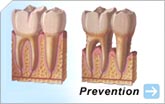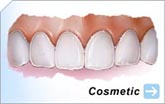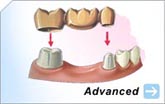 |
 |
 |
|
Fillings Get Smaller...and Smaller by Judith Sloan |
||
|
We all remember going to the dentist, opening wide, and listening with held breath while he examined our teeth for decay. "Please, no cavities," we prayed. With his prickly instrument in hand, our dentist probed every tooth, looking for "soft" spots where decay had invaded our once hard, pristine dental enamel. And when the point found its quarry, a tiny spot of decay, he would nod and say, "We've got a small one here. We'll watch to see if it grows into something." No longer. Fast-forward to 2004, and the prickly instrument takes a back seat to a high-tech laser probe that lands a preemptive strike in the battle against decay. Make way for "Minimally Invasive Dentistry." The mouthful of words means simply that dentists no longer allow dots of decay to advance into large craters. Armed with the ultimate in high-tech sleuthing, they now set out to find decay at the earliest possible moment. "Now we can absolutely eliminate many large fillings that lead to cracked teeth, crowns and other more invasive treatment," says Dr. Daniel J. Deutsch, of the Washington Center for Dentistry in Washington, DC. Here's how it works: The dental decay finder touches the surface of every tooth, each time flashing a digital score that reports the presence of decay. A tooth that scores above a certain number has at least the tiniest dot of decay. And getting at the teeny offending area involves another technological wonder. A gentle dental "sandblaster" uses tiny particles to whisk away decay in layers. The area gets filled in with a tooth-colored liquid that hardens in seconds under a special light. Patients walk out of the office with tiny fillings. "And the best part," says Dr. Deutsch, "is they have treatment with no needle and no drill!"
|